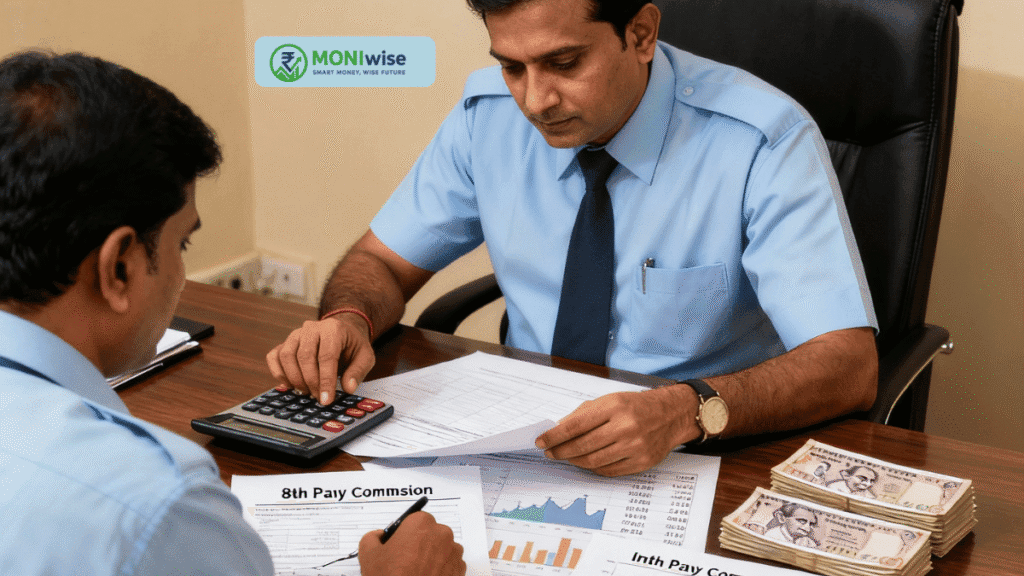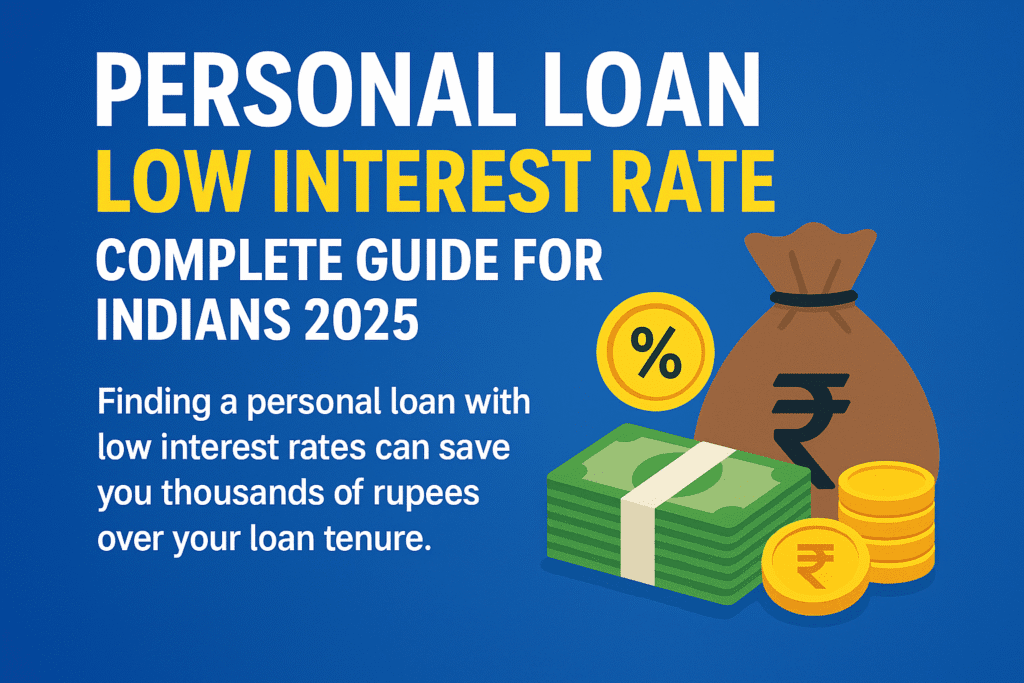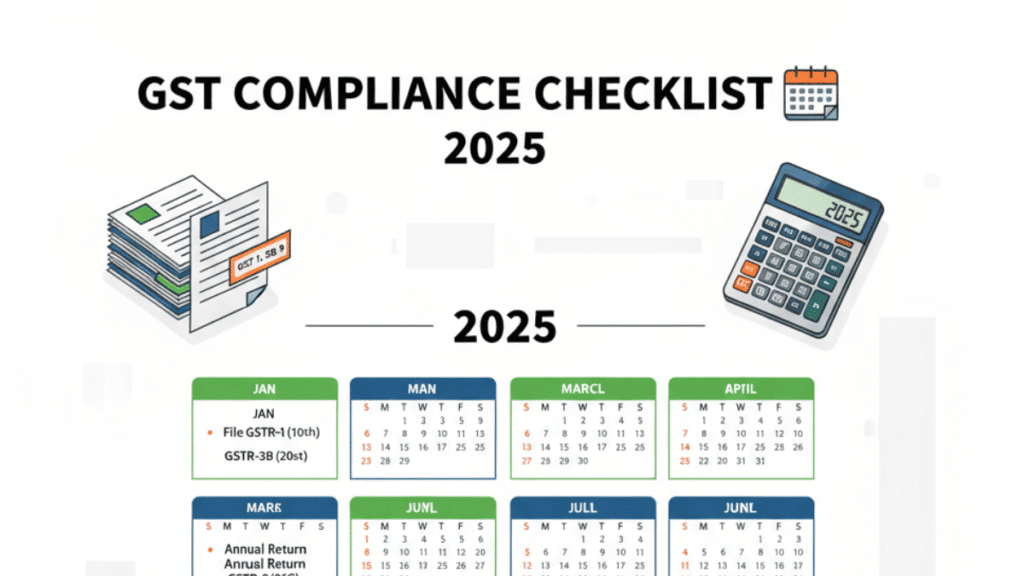The 8th Pay Commission represents a watershed moment for over 1.2 crore central government employees and pensioners across India. With an expected salary hike of 30-34% and a potential fitment factor of 2.6 to 2.85, government employees are set to receive a substantial boost in their monthly income starting January 2026. However, the real challenge lies not in receiving this windfall, but in strategically deploying it to build long-term wealth and financial security.
Understanding the 8th Pay Commission Impact
Expected Implementation and Benefits
The 8th Central Pay Commission is scheduled to come into effect from January 1, 2026, despite potential delays in formal notification. Current projections suggest that the minimum basic pay could increase from ₹18,000 to approximately ₹41,000-₹51,480, while the maximum salary could rise proportionally.
For a Level-4 employee currently earning ₹25,500 as basic pay, the new salary structure could result in approximately ₹48,960, representing an increase of nearly ₹23,460 per month. This translates to an additional annual income of over ₹2.8 lakh for such employees.
Timeline and Arrears
Despite the expected effective date of January 2026, actual implementation might be delayed until mid-2027 or early 2028. However, employees need not worry about missing out on benefits, as the government typically pays 18-month arrears covering the period from the effective date to actual implementation.
Step-by-Step Financial Strategy for Extra Salary
Step 1: Build a Robust Emergency Fund (Priority: High)
Target Allocation: 15% of salary hike
Before making any investments, government employees should prioritize building or strengthening their emergency fund. While government jobs offer more security than private sector employment, unexpected expenses such as medical emergencies, family obligations, or economic uncertainties can still arise.
Action Plan:
- Maintain 6-12 months of living expenses in a liquid savings account
- For an employee receiving ₹15,000 extra monthly salary, allocate ₹2,250 toward emergency fund
- Keep funds in high-yield savings accounts or liquid mutual funds earning 4-6% returns
- Use this fund exclusively for genuine emergencies, not planned expenses
Step 2: Maximize Government Provident Fund Contributions (Priority: High)
Target Allocation: 20% of salary hike
Government employees have access to the General Provident Fund (GPF) or Employee Provident Fund (EPF), which currently offers 8.25% annual returns. This represents one of the safest and most tax-efficient investment options available.
Strategic Implementation:
- Increase voluntary GPF/EPF contributions beyond the mandatory minimum
- Contributions qualify for Section 80C tax deductions up to ₹1.5 lakh annually
- Interest earned is tax-free, making the effective return higher than taxable investments
- For the ₹15,000 monthly increase example, contribute ₹3,000 additional to GPF/EPF
Step 3: Optimize Public Provident Fund Investment (Priority: High)
Target Allocation: 15% of salary hike
The Public Provident Fund (PPF) remains a cornerstone investment for government employees, offering 7.1% tax-free returns with a 15-year lock-in period.
Implementation Strategy:
- Maximize annual PPF contribution to ₹1.5 lakh limit
- If already contributing the maximum, consider opening PPF accounts for spouse and children
- PPF offers triple tax benefits: deduction on contribution, tax-free interest, and tax-free maturity
- Allocate ₹2,250 from the monthly hike toward PPF
Step 4: Enhance National Pension System Participation (Priority: Medium)
Target Allocation: 15% of salary hike
The National Pension System (NPS) provides additional tax benefits beyond Section 80C, with Section 80CCD(1B) allowing extra deductions up to ₹50,000.
Strategic Approach:
- Government employees can contribute up to 14% of salary to NPS
- Expected returns: 10-12% annually based on market performance
- Additional ₹50,000 tax deduction over and above Section 80C limit
- Systematic increase of NPS contributions by 5-10% annually with salary hikes
Step 5: Diversify Through Equity Linked Savings Schemes (Priority: Medium)
Target Allocation: 10% of salary hike
Equity Linked Savings Scheme (ELSS) mutual funds offer the shortest lock-in period (3 years) among Section 80C investments while providing potential for higher returns.
Investment Framework:
- Expected returns: 12-15% annually over long term
- Shortest lock-in period among tax-saving investments
- Professional fund management reduces individual stock selection risk
- Allocate ₹1,500 monthly from salary hike to ELSS funds
Step 6: Establish Systematic Investment Plans in Equity Funds (Priority: Medium)
Target Allocation: 15% of salary hike
Beyond tax-saving investments, government employees should diversify into regular equity mutual funds through Systematic Investment Plans (SIPs).
Implementation Plan:
- Start with diversified large-cap funds for stability
- Gradually add mid-cap and small-cap funds for growth potential
- Consider index funds like Nifty 500 for broad market exposure
- Increase SIP amounts by 5-10% annually with future salary increments
Step 7: Secure Adequate Life Insurance Coverage (Priority: Low-Medium)
Target Allocation: 5% of salary hike
Government employees often have basic life insurance through group policies, but additional term insurance provides enhanced financial protection for dependents.
Coverage Strategy:
- Purchase term insurance worth 10-15 times annual salary
- Premiums qualify for Section 80C deductions
- Keep insurance and investment separate – avoid ULIPs for primary coverage
- Review coverage annually with salary increases
Step 8: Consider Alternative Investments (Priority: Low)
Target Allocation: 5% of salary hike
Once core financial goals are addressed, government employees can explore alternative investments like gold ETFs or real estate investment trusts (REITs) for portfolio diversification.
Diversification Options:
- Gold ETFs or Gold Mutual Funds for inflation hedge
- REITs for real estate exposure without direct property investment
- International mutual funds for geographical diversification
- Keep allocation minimal (5-10% of total portfolio)
Long-term Wealth Building Strategy
Retirement Corpus Calculation
Government employees should leverage the salary hike to accelerate retirement planning beyond pension benefits. A systematic approach involves:
Retirement Planning Framework:
- Calculate retirement expenses considering inflation (6-7% annually)
- Factor in medical cost inflation (10-12% annually)
- Build corpus targeting 25-30 times annual expenses at retirement
- Use retirement calculators to determine monthly investment requirements
Tax Optimization Strategy
The salary hike provides opportunities for enhanced tax planning:
Multi-tier Tax Strategy:
- Section 80C: ₹1.5 lakh through PPF, EPF, ELSS, insurance
- Section 80CCD(1B): Additional ₹50,000 through NPS
- Section 80D: Health insurance premiums
- Section 24(b): Home loan interest deductions
Annual Review and Rebalancing
Financial planning is not a one-time activity but requires regular monitoring:
Review Process:
- Annual assessment of portfolio performance
- Rebalancing asset allocation based on life stage
- Increasing investments with future salary hikes
- Adjusting goals based on changing circumstances
Interactive Investment Calculator
Government employees can use the following formula to calculate optimal investment allocation:
Investment Allocation Formula:
Monthly Investment Amount = (Salary Hike × Allocation Percentage) ÷ 100
Annual Investment = Monthly Investment × 12
Expected Corpus = Annual Investment × [(1 + Return Rate)^Years - 1] ÷ Return Rate
For practical implementation, use online calculators to model different scenarios and investment combinations.
Recommended Investment Mix by Age Group
Age 25-35 (Aggressive Growth Phase)
- Emergency Fund: 10%
- GPF/EPF: 20%
- PPF: 10%
- NPS: 15%
- ELSS: 15%
- Equity SIPs: 25%
- Others: 5%
Age 35-45 (Balanced Growth Phase)
- Emergency Fund: 15%
- GPF/EPF: 25%
- PPF: 15%
- NPS: 15%
- ELSS: 10%
- Equity SIPs: 15%
- Others: 5%
Age 45-55 (Conservative Phase)
- Emergency Fund: 15%
- GPF/EPF: 30%
- PPF: 20%
- NPS: 15%
- Debt Funds: 15%
- Others: 5%
8th_pay_commission_investment_guide.csv
| Priority | Investment_Option | Recommended_Allocation_% | Lock_in_Period | Expected_Returns_% | Tax_Benefits |
|---|---|---|---|---|---|
| High | Emergency Fund | 15 | None | 4.0 | No |
| High | GPF/EPF Increase | 20 | 5 years | 8.25 | Section 80C |
| High | PPF | 15 | 15 years | 7.1 | Section 80C |
| Medium | NPS | 15 | Till 60 | 10.0 | Section 80CCD |
| Medium | ELSS Mutual Funds | 10 | 3 years | 12.0 | Section 80C |
| Medium | SIP in Equity Funds | 15 | None | 12.0 | LTCG benefits |
| Low | Insurance (Term) | 5 | Policy term | 0.0 | Section 80C |
| Low | Gold/Real Estate | 5 | Varies | 8.0 | No |
Common Mistakes to Avoid
Lifestyle Inflation Trap
Avoid increasing expenses proportionally with salary hike. Maintain current lifestyle and invest the majority of additional income.
Over-concentration in Government Schemes
While government schemes offer security, diversification across asset classes enhances long-term returns.
Delayed Investment Start
Begin investing immediately rather than waiting for “perfect” market conditions. Time in market beats timing the market.
Inadequate Insurance Coverage
Don't rely solely on government-provided insurance. Supplement with adequate term life and health insurance.
Conclusion
The 8th Pay Commission salary hike presents a golden opportunity for government employees to accelerate their wealth-building journey. By following this systematic approach—prioritizing emergency funds, maximizing government scheme contributions, diversifying through market-linked investments, and maintaining disciplined investment habits—employees can transform their salary increase into substantial long-term wealth.
The key lies in treating the salary hike as an investment opportunity rather than a license for lifestyle inflation. Government employees who strategically deploy their additional income today will enjoy financial independence and security in their retirement years.
Remember that financial planning is a marathon, not a sprint. Start with small, consistent steps and gradually increase your investments as your comfort and knowledge grow. Consider consulting with financial advisors to customize strategies based on your specific circumstances and goals.
Take Action Today: Calculate your expected salary hike, allocate funds according to the priority matrix provided, and begin systematic investments immediately. Your future self will thank you for the disciplined approach you take today.
Frequently Asked Questions
Q: When will the 8th Pay Commission salary hike be implemented?
A: The 8th Pay Commission is expected to be effective from January 1, 2026, though actual implementation may be delayed until mid-2027. Employees will receive arrears from the effective date regardless of implementation delays.
Q: How much salary hike can government employees expect from the 8th Pay Commission?
A: Government employees can expect a salary hike of 30-34% with a fitment factor ranging from 2.6 to 2.85. The minimum basic pay may increase from ₹18,000 to approximately ₹41,000-₹51,480.
Q: What is the best investment strategy for 8th Pay Commission salary hike?
A: Prioritize emergency fund (15%), increase GPF/EPF contributions (20%), maximize PPF (15%), enhance NPS participation (15%), and diversify through ELSS and equity SIPs. Avoid lifestyle inflation and invest systematically.
Q: Should government employees increase their GPF contribution after salary hike?
A: Yes, increasing GPF/EPF contributions should be a top priority as it offers 8.25% tax-free returns, Section 80C benefits, and guaranteed safety. Allocate 20% of salary hike to GPF/EPF for optimal returns.
Q: How can government employees optimize tax savings with 8th Pay Commission hike?
A: Use Section 80C (₹1.5 lakh through PPF, EPF, ELSS), Section 80CCD(1B) (₹50,000 through NPS), and Section 80D (health insurance premiums). This multi-tier approach maximizes tax benefits while building wealth.
Q: Is it safe for government employees to invest in equity mutual funds?
A: Yes, government employees can invest in equity mutual funds through SIPs for long-term wealth creation. Their job security allows them to take calculated risks for higher returns. Start with large-cap funds and diversify gradually.
Q: How much emergency fund should government employees maintain?
A: Government employees should maintain 6-12 months of living expenses as emergency fund. While government jobs offer more security, unexpected expenses can still arise. Keep funds in liquid, easily accessible accounts earning 4-6% returns.
Disclaimer: This article provides general financial information and should not be considered as personalized investment advice. Government employees should consult qualified financial advisors before making investment decisions. Past performance does not guarantee future results, and all investments carry inherent risks.



